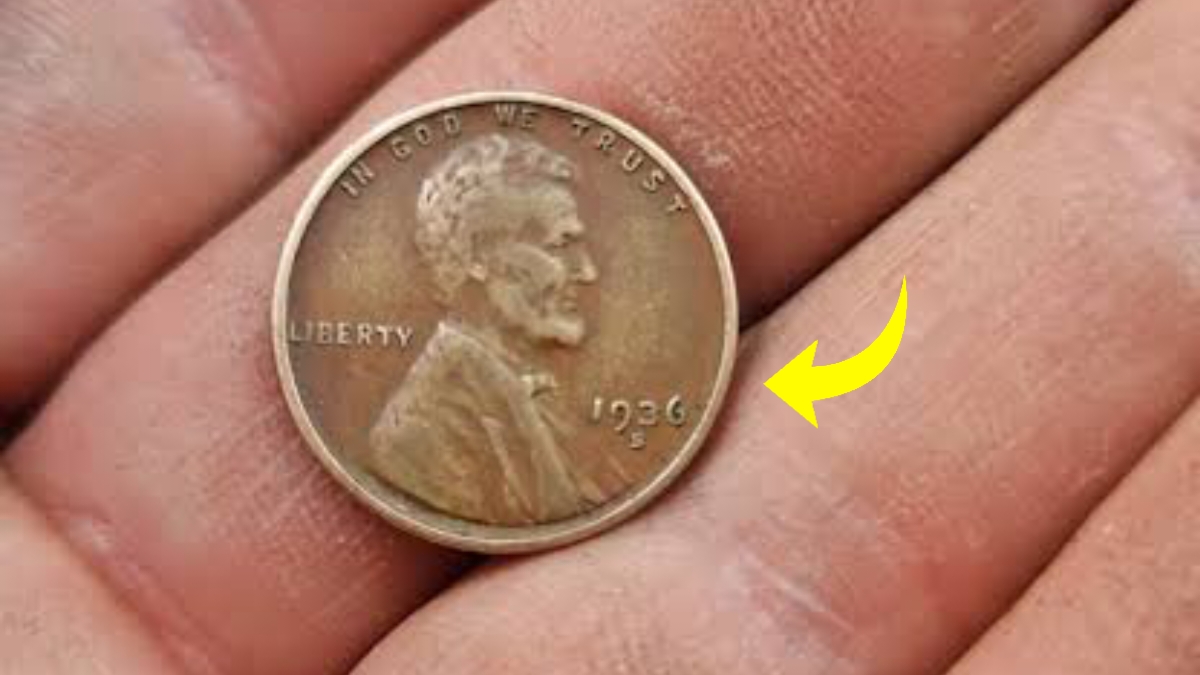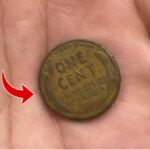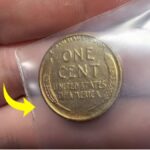Every day across the United States, people handle small change without giving it a second look. Yet among those ordinary coins, a remarkable piece of history may be hiding—a Lincoln Wheat Penny reportedly worth as much as $991,000. This isn’t a myth or an exaggerated rumor. It’s a real possibility, grounded in rare minting errors and extraordinary collector demand. The idea that a penny could be worth nearly a million dollars is astonishing, but it has happened before. These rare coins have fetched enormous sums at public auctions, turning pocket change into fortune. What makes it even more exciting is that these coins could still be out there, circulating undetected. Whether you’re a seasoned collector or just someone with a coin jar in your kitchen, this story may inspire you to take a closer look. A single penny might be the key to an unexpected windfall.
The 1943 Copper Error That Made History
The Lincoln Wheat Penny was first introduced in 1909 to commemorate the 100th anniversary of President Abraham Lincoln’s birth. It remained in production until 1958 and is one of the most collected coins in U.S. history. But the specific year that truly captivates collectors is 1943. During World War II, copper was urgently needed for military supplies, so the U.S. Mint began producing pennies using zinc-coated steel instead. However, a few copper planchets from the previous year were accidentally left in the coin presses and got stamped with the 1943 design. These error coins became some of the rarest in American numismatics. Only a small number of 1943 copper pennies are known to exist, making them highly valuable and sought after. Experts believe there could still be undiscovered pieces out there. The $991K estimate for one of these coins is grounded in recent auction results and expert evaluations.
Why Is This Penny Worth So Much?
The value of this coin—nearly a million dollars—comes down to three main factors: rarity, error type, and condition. First, it’s a product of a mistake that shouldn’t have happened. Minting errors are among the most valuable types of coins in the world, especially when they involve materials that were never supposed to be used. Second, there are very few known examples of the 1943 copper penny. When demand meets scarcity, prices skyrocket. Finally, condition plays a huge role. A coin that has been well-preserved, with no signs of wear or corrosion, can be worth many times more than one in poor shape. Collectors are willing to pay premium amounts for coins that are both historically significant and physically pristine. In auctions, verified 1943 copper pennies in excellent condition have fetched close to or even over the $900K mark, solidifying their place in the elite world of numismatic treasures.
Could It Still Be Out There?
The most exciting part of this story is the real possibility that a $991K Lincoln Wheat Penny could still be circulating. These coins aren’t visually flashy or made of precious metals, so they can easily blend in with regular change. People often overlook coins, assuming they’re all the same. A copper 1943 penny looks similar to countless others at a glance, and unless someone knows what to check, it could go completely unnoticed. Over the decades, coins get tossed into jars, drawers, and boxes, forgotten until someone takes the time to look. It’s entirely plausible that one of these error coins is still hiding in a household collection or a forgotten envelope. The idea of a life-changing penny being overlooked makes the hunt all the more thrilling. The next time you receive coins, you might want to pause before spending that old-looking penny without checking its date.
Simple Ways to Spot the Rare Penny
If you want to know whether your coin could be the $991K Lincoln Penny, there are a few easy ways to start. First, check the year—1943 is the key. Then, look at the color. If your 1943 penny is a typical silver tone, it’s steel. But if it’s brown or reddish like traditional pennies, it could be copper. A quick magnet test helps too—steel pennies stick to magnets, but copper ones don’t. For added confirmation, weigh the coin. A copper penny should weigh around 3.1 grams, while a steel version will be closer to 2.7 grams. If you believe you’ve found something special, do not clean or alter the coin. Instead, consult a professional grading service or experienced coin dealer. They can authenticate and value the piece accurately. Proper evaluation ensures that if you do have a rare coin, you’ll know exactly what it’s worth and how to handle it for maximum benefit.
Other Lincoln Pennies Worth Your Attention
While the 1943 copper error penny steals the spotlight, several other Lincoln Wheat Pennies are also extremely valuable. The 1909-S VDB penny is one of the most desirable early issues, known for its low mintage and inclusion of the designer’s initials. The 1914-D penny is rare due to its limited production at the Denver Mint. The 1922 “No D” penny lacks a visible mint mark, a unique characteristic that boosts its value. Another favorite among collectors is the 1955 Doubled Die penny, which displays a striking doubling of the date and lettering. Each of these coins holds historical and monetary significance and has sold for thousands of dollars depending on condition. Checking for these dates and errors in your collection could uncover a coin worth much more than face value. A careful eye and a little research go a long way when dealing with potentially rare coins.
The Growing Popularity of Coin Collecting in the U.S.
Coin collecting isn’t just a niche hobby anymore—it’s becoming a nationwide phenomenon. From online communities to local coin shows, more and more people are discovering the joy of collecting and the thrill of finding hidden value. Stories of valuable coins found in change or old piggy banks have fueled public interest. Television features and viral videos have also made rare coins mainstream conversation. With prices rising and demand increasing, collecting has become a smart and rewarding pastime. Whether you’re a casual enthusiast or a dedicated numismatist, there’s a growing sense of excitement around coins. Each penny you check could be your golden ticket. The $991K Lincoln Wheat Penny is a prime example of how an ordinary-looking item can hold extraordinary value. In a world filled with digital currency and online wallets, coins still have the power to surprise, fascinate, and change lives in unexpected ways.
Disclaimer
This article is for informational purposes only and should not be considered professional financial or investment advice. The estimated $991,000 valuation is based on previous auction data, market trends, and expert opinions in the numismatic field. While such a coin could theoretically still be in circulation, its discovery remains rare and uncertain. Readers are encouraged to consult certified numismatic professionals or accredited grading services such as PCGS or NGC before making any assumptions about a coin’s authenticity or value. Proper handling is crucial, and cleaning or altering a coin can negatively impact its market worth. The presence of a rare coin in general circulation is highly unlikely but not impossible. Always approach coin collecting with patience, care, and realistic expectations. This article does not guarantee outcomes and is not responsible for actions taken based on its content. Collect responsibly and verify your findings with experienced professionals.




